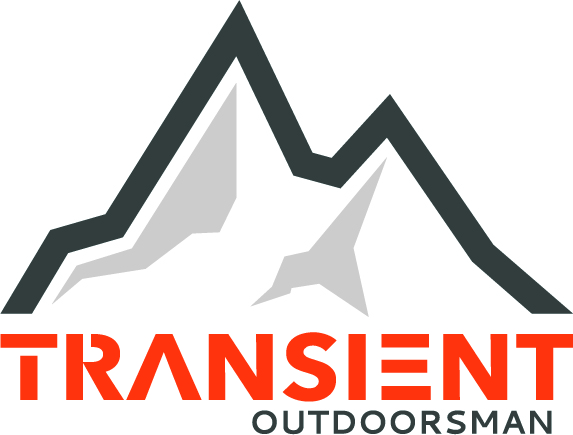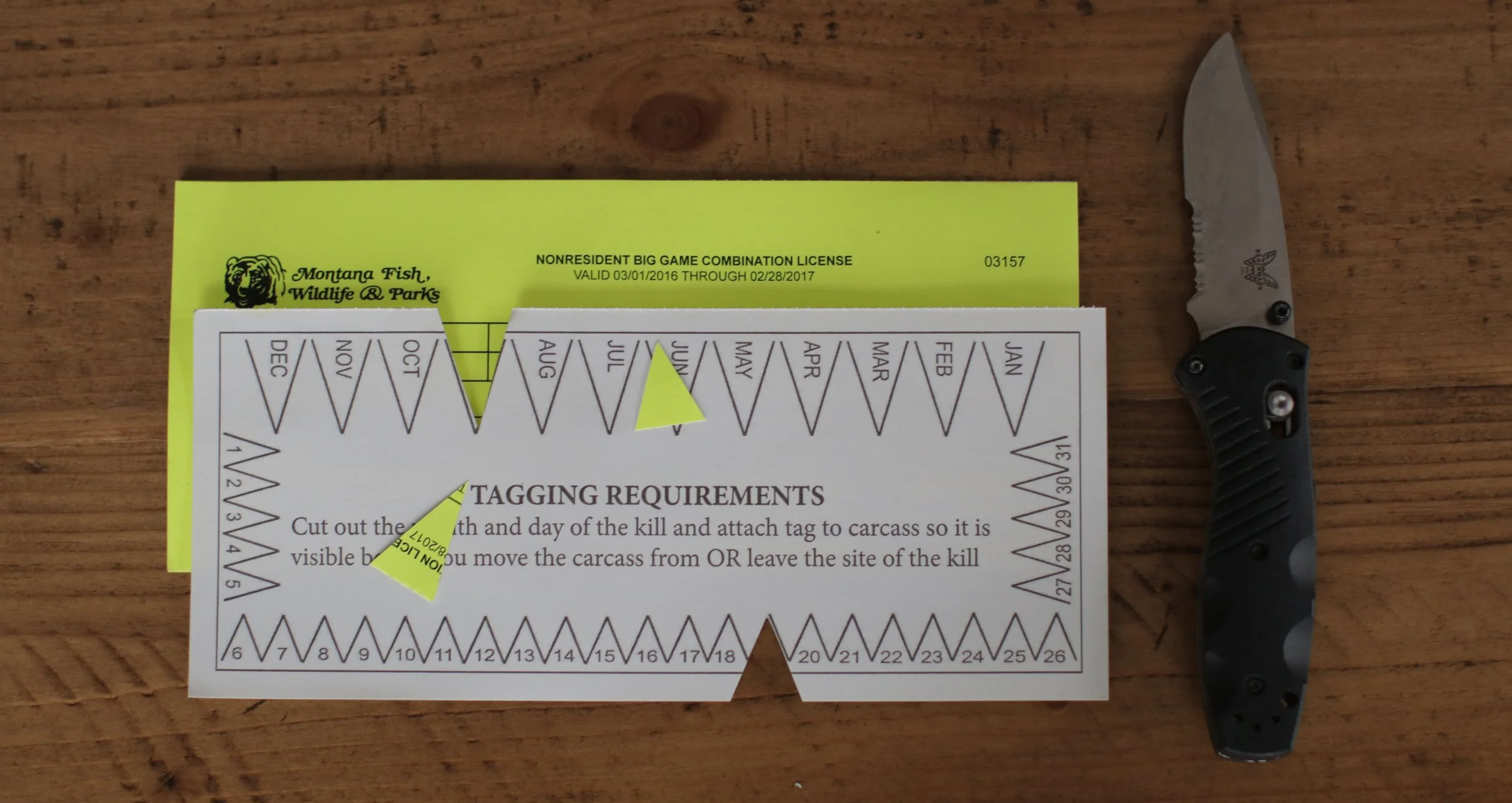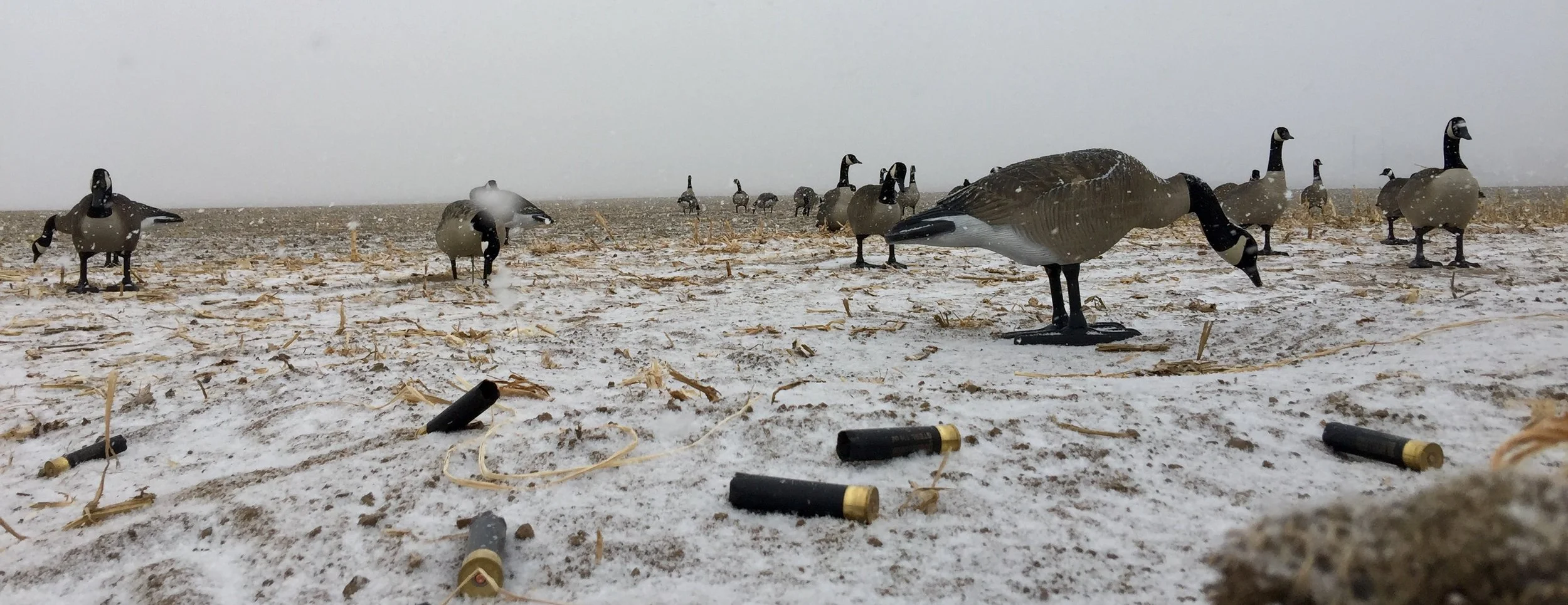Dreaming of Trophy Big Game? Start Applying Now
Drawing big game tags in trophy units across the great American West is kind of like gambling in Vegas. If you don’t have any (or many) points, the odds are about like hitting the jackpot on a big slot machine payout. But then again, if you’re unsuccessful, almost all of the money comes back to you – more on this later.
I often encourage young hunters, and parents of young hunters, to start applying early. The yearly accumulation of points – one for each year the hunter is unsuccessful at drawing a tag – is vital if you’re looking to hunt public ground with little pressure, good opportunities and Boone & Crockett potential.
That’s not to say you can’t have the hunt of a lifetime in units with better draw odds or over-the-counter tags, because you absolutely can. What I’ll outline here concerns folks who want a shot at world-class, public land hunting, and aren’t afraid to exercise some patience.
By no means a record book elk, this is my 2016 public land archery bull.
In very rough numbers, if you’re looking to apply for some of the best trophy units in the country as a non-resident, it can easily take five years to see “successful” when you check the status of your pronghorn application. Deer and elk generally take even longer. For mountain goat and Shiras moose, don’t get too excited until you’ve been applying for eight or 10 years. And if you’re looking for a sheep tag in the Lower 48, you're in for the long haul.
That said, I do know a guy who drew a Rocky Mountain Bighorn tag in Montana on his second try, and proceeded to harvest a record book ram. You just never know. While the odds can seem dismal, remember that building preference or bonus points is the key, especially in a state like Montana, where the points are now squared.
Suffice it to say, if you want to do some public land, trophy big game hunting, there’s no better time to start applying than 10 years ago! Don’t have a time machine? Well, with Wyoming’s elk application deadline looming at the end of January, this week is a distant second best.
A great way to increase your odds is to apply in multiple states. I apply in 12 states every year, for a bunch of different animals. In all, I put in for 52 tags, and apply my wife for an additional 16 tags. It’s no small task keeping all of the information organized, let alone doing the research that’ll allow you to make an educated decision about which specific units to apply for. My advice is to create your own organized cataloging system, whether that's a digital Excel spreadsheet, or columns on notebook paper.
My second piece of advice would be would be to join Huntin’ Fool. A $100 yearly membership to this organization goes a long, longgg way to simplify the process, while also providing a ton of resources you wouldn't otherwise have access to. They’ll even take the work out of the application process for you entirely and handle it soup-to-nuts, but I simply have too much fun doing all the research myself. Plus, a Huntin’ Fool membership comes with a subscription to one of the best hunting magazines out there. I promise you won’t regret it.
Huntin' Fool hunt advisors are second to none, the magazine rocks, and the info available is amazing.
Spendy game
Some states allow you to put in for a tag with as little as $10 upfront, like Utah. Other states, including Idaho and Wyoming, make you pay the entire tag fee upfront, and refund it back to you after the draw if you’re unsuccessful. Which… you probably will be. And Colorado takes it a step further and makes you send in a personal check for the total cost, for a few species anyhow. It’s more than an annoyance, when you consider that tags can cost more than $3,000 apiece. But don’t let this scare you. Most deer, elk and pronghorn tags are nowhere near that price.
The elephant that just stomped into the room is named “Where do I get that kind of cash?” Let’s face it, most of us don't have that kind of money laying around. Keep in mind, those tags aren’t all drawn at the exact same time, and some payments will be going out as others are being refunded. But the fact remains that between the months of January and May, someone applying for a lot of tags is paying out thousands upon thousands of dollars to play the game. Ultimately, if they don’t draw any tags, nearly all that money will be refunded.
This is an exceptionally big problem considering that I’m urging young people to start applying ASAP. The overwhelming majority of teens and 20-somethings don’t have access to that kind of coin or credit.
So where does that leave the young hunter? Well, you pretty much have two choices.
Option #1
The first option is the easiest, though it does involve some compromise. I know, I know, I don’t like the word either…
Play in the states that don’t require big money up front. This will limit your choices on some good states for sheep, mountain goat, moose and to some degree elk. But it doesn’t take you out of the running.
Arizona, aside from a pretty stout non-refundable license, is cheap to apply for various species. If you want to hunt huge elk, Arizona is a must-apply state.
Idaho is very affordable for deer, elk and pronghorn. And because there's no point system in Idaho, it offers some of the best odds on Rocky Mountain bighorn and mountain goat.
Montana is an affordable option for bighorn, Shiras moose and mountain goat.
Nevada offers some of the very best prices for two species of sheep, as well as deer, elk and pronghorn. Like Montana, points are squared in Nevada.
Oregon is only $8.00 per species after the $160 license, but the odds in that state are among the worst in the West.
South Dakota is super cheap, but they don’t have any mountain species.
Texas is a must if you want a reasonably priced chance at a desert bighorn. Just $10. If you want to hunt sheep someday, and you take nothing else from this article, start applying in Texas now and never miss a year.
Utah is affordable across the board, and offers a wide variety of game.
Washington isn't outragious for sheep, but like Oregon, the odds are very slim.
Option #2
The other option is to get a credit card with zero percent APR for 12 or more months. Look for a card with good benefits and no annual or cancellation fee. For example, I’m using a Chase Freedom Unlimited Visa that offers 1.5% cash back. Might be a good place to start looking.
If you’re too young to have any credit, ask a parent or grandparent to get a card for you and help you work through the different state applications. You’ll owe them for the various licenses and fees, but the vast majority of the money is going to come back to them many months before the card’s standard APR kicks in.
Obviously, cards have limits, and you might have to combine Option #1 and #2 to make the most of your application process. And don’t forget to cancel the card after all the money comes back in and the balance is paid. You can get a new one next year.
One more note on credit cards. I know all states take Visa, and not many states take American Express. So figure out which states you want to apply in and call them to learn which cards they accept before applying for anything other than a Visa.
Also, a note about preference points. Know that in most states, there is a “points only” option. This will give you a point without putting you in for the draw. If you absolutely can’t go on an elk hunt in 2017, for whatever reason, you can be 100% certain you won’t draw if you choose “points only.” And yes, you’ll lose all your points if you miss more than one year of applying for a certain species.
If there’s a will, there’s a way
I know this sounds like a lot of work, and for such a small likelihood of drawing a tag. If a non-hunter has read this far, they’re no doubt thinking by now that we’re all nuts. But if there’s a will, there’s a way. If you’ve got the passion to pursue trophy-class big game on public ground, you understand why it’s worth all the hassle. And the draw process can be a lot of fun, too. You’ll learn a lot about the western half of the US during your research.
Time flies, and 2027 will be here in the blink of an eye. Your hunting career will thank you profusely if you’re sitting on 10 preference points for some really outstanding tags. By then, you’ll probably have already drawn and hunted some really great units along the way. I really wish I would have started applying when I was in my late teens.
As I said before, there are plenty of units you can easily draw or buy over-the-counter if you just want to get out there and hunt. They might not be stellar trophy units, but you’ll be hunting!
A common question from someone that doesn’t understand the draw is, “What happens if you draw all the tags this year?” I’ll tell you exactly what happens. That’s when I sell my house, all my possessions, buy a camper, launch a TV show, and proceed to have the single most successful hunting season of any human being that has ever walked the face of the Earth.
Give us a follow on Instagram (@TransientOutdoorsman) and Twitter (@TransientOutdrs) We’re on Facebook and YouTube, too!
A deadhead I found in an Alaskan trophy moose unit. For scale, I'm 5'11".
Zero Your Turrets – T.O.
# # #








